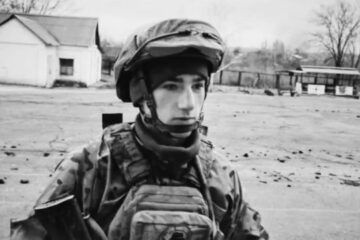The key perpetrator behind the attack has been named. Reconstruction has finally begun, though the process has been overshadowed by bureaucracy and complications around tenders.
Exactly one year ago, on the morning of July 8, 2024, Russia launched a massive missile attack across Ukraine. One of the primary targets in Kyiv was Okhmatdyt, the country’s leading children’s hospital, where 627 young patients were present at the time. The attack became not just another war crime, but a grim symbol of the aggressor’s cruelty and cynicism — a moment seared into the nation’s collective memory.
The strike killed two adults, injured eight children, and claimed the life of a boy in intensive care a few days later. One year on, it remains essential not only to remember what happened but also to assess what has since been discovered about the crime, who was responsible, and how far the hospital’s complex reconstruction has progressed — a hospital that now stands as yet another symbol of Ukrainian resilience.
A SPONTANEOUS SWARM OF SOLIDARITY
News of the strike on Okhmatdyt spread rapidly across Kyiv and the country, sparking not only shock and outrage but also a powerful wave of solidarity. Almost immediately, the hospital grounds transformed into a massive, albeit chaotic, yet remarkably effective hive of activity. Hundreds — possibly thousands — of Kyiv residents rushed to help without waiting for calls or formal mobilization. They joined rescue teams, the military, and utility workers, forming human chains to clear the rubble. Bricks, chunks of concrete, and twisted metal — still warm from the explosion — were passed from hand to hand.
The volunteer turnout became so overwhelming at one point that it hindered the movement of heavy equipment. Police had to temporarily restrict access to coordinate the effort. Nonetheless, support kept coming. People brought water, food, and hot meals to sustain those working in the ruins. Businesses pitched in as well, supplying emergency responders and volunteers with essential goods.
Even repeated air raid sirens and the real threat of a double-tap strike — a tactic often used by Russian forces — failed to stop the volunteers. Everyone understood that every minute could be decisive: someone might still be alive under the rubble, or vital medical equipment might still be saved. The citizens’ spontaneous, selfless response once again showcased Ukrainians’ exceptional capacity for self-organization in times of crisis — turning a scene of devastation into one of unity and strength.
THE KH-101 MISSILE: A DELIBERATE RUSSIAN WAR CRIME
Immediately after the attack, Russian propaganda began circulating claims that the hospital was struck accidentally due to Ukrainian air defense activity. However, evidence gathered by Ukrainian authorities and verified by international experts swiftly debunked this narrative. The Security Service of Ukraine classified the attack as a war crime under Article 438 of the Criminal Code, and the investigation produced clear findings.
At the site, investigators found numerous missile fragments, including key components of a Russian Kh-101 cruise missile: an engine piece, wing deployment mechanism, jamming module, fuselage section with serial numbers, and the tail section’s fairing. These fragments were identified by experts from the Kyiv Scientific Research Institute of Forensic Expertise.
The findings were independently confirmed by international investigators. Analysts at Bellingcat, after studying social media footage and 3D models, concluded that the weapon used was indeed a Kh-101. Distinctive features — such as the under-hanging engine and wing design — pointed unambiguously to this missile, which is used exclusively by the Russian armed forces. Similar conclusions were reached by leading Western missile experts, including Fabian Hoffmann (University of Oslo) and Jeffrey Lewis (Middlebury Institute of International Studies).
The theory that the explosion came from a U.S.-made AIM-120 missile launched by a NASAMS system was also debunked, with experts citing significant structural differences.
Finally, trajectory analysis sealed the case. Defense Express analysts determined that the missile did not simply “fall” on the hospital. Instead, it performed a typical Kh-101 attack maneuver: flying at extremely low altitude to avoid radar detection, it suddenly climbed before plunging almost vertically into its pre-programmed target — which, in this case, was Okhmatdyt.
THE FACE OF TERROR: THE STRIKE ON CHILDREN WAS PREPARED BY MAJOR SHEYNOV
War crimes are not committed anonymously. Behind each missile are people who plan, order, and execute. According to a military intelligence source who spoke to Ukrinform, one of those directly involved in preparing the missile strike was identified as Major Denis Alekseyevich Sheynov. He served as head of the Special Engineering Service of Russia’s 121st Heavy Bomber Aviation Regiment, part of the 22nd Heavy Bomber Aviation Division. Sheynov was reportedly responsible for overseeing the technical preparation of Kh-101 air-launched cruise missiles for use by strategic bombers.
Sheynov, born on January 30, 1978, in Saratov, held a passport (series 6302 number 906672) issued by the Kirovsky District Internal Affairs Department of Saratov on March 15, 2002. He graduated from the Saratov Higher Military Engineering Command School of Missile Forces in 2000. According to intelligence, Sheynov carried out “special missions” in the Syrian Arab Republic in 2018 and received several military awards, including the Medal “For Military Valor” (2nd Class, 2000), the Medal “For Distinction in Military Service” (1st Class, 2015), and the Medal “Participant in the Military Operation in Syria” (2019).
Sheynov, the head of the Special Engineering Service responsible for preparing missile strikes, including the one on the children’s hospital housing 627 critically ill patients, is married and has a son and a daughter. His wife is Elena Mikhailovna Shabalova, born on April 30, 1976.
Ukrainian intelligence has also identified the family’s residential address: 12 Batavina Street, Apartment 266, Saratov, Saratov Region, Russia.
Releasing this information is a step toward personalizing accountability. It dismantles the myth of a faceless war machine and reminds the world that real individuals — with names, ranks, and life stories — stand behind these crimes. Eventually, they and their commanders will be held accountable.
THE SCALE OF DESTRUCTION AND COST OF RECOVERY
The missile strike inflicted immense damage on the hospital, with losses amounting to hundreds of millions of hryvnias. The toxicology building was the most severely hit — partially destroyed — but nearly every structure in the complex sustained damage. In total, ten surgical departments, five oncology units, two general pediatric wards, an ICU, two critical care departments, operating rooms, the radiology and radiation therapy departments, and part of the oncohematology lab were affected. The old surgical building was so badly damaged that it was declared structurally unsafe and slated for demolition.
The attack also destroyed the hospital’s transformer substation, cutting off power, water, and centralized oxygen supply. Emergency crews from DTEK had to rapidly install three mobile substations to restore critical services.
The response was not limited to physical aid. Financial support poured in as well. Within 28 hours of launching a campaign via the government’s UNITED24 platform and monobank, over 300,000 donations raised UAH 280 million — the platform’s fastest fundraising effort to date.
Businesses also stepped up. McDonald’s Ukraine pledged all profits from cheeseburger sales on July 9 toward the hospital’s needs. The day after the strike, President Volodymyr Zelensky announced an initial government allocation of UAH 100 million, followed by a commitment of another UAH 300 million.
RECONSTRUCTION: BETWEEN SETBACKS AND HOPE
The road to rebuilding Okhmatdyt has been as difficult as the aftermath of the strike itself. The primary goal was to restore the new diagnostic and treatment building, which houses most of the hospital’s essential operations. However, the process was delayed by controversy surrounding the initial tender.
The first tender was announced by the charitable foundation “Okhmatdyt – Healthy Childhood,” since the hospital was not in a position to manage procurements at the time. The tender was posted on a commercial platform, Zakupki.Prom, instead of Ukraine’s state procurement system, Prozorro. The winner, Bud-Technology, proposed a bid of UAH 307 million. However, a Nashi Groshi investigation raised concerns over inflated costs and work volumes, prompting public outcry and the tender’s cancellation.
Tensions grew between the foundation managing the donations and the hospital’s leadership. The Minister of Health intervened, suspended the hospital director, and formed a supervisory board to oversee reconstruction.
Ukrainian Health Minister Viktor Liashko
A new tender was held in May 2025, this time via Prozorro. The winning bidder, Riola-Module Ltd, submitted a bid of nearly UAH 293 million — UAH 70 million the expected cost. Construction began on June 9, 2025. The first priority was sealing the damaged facade before winter. Complicating matters, the hospital continues to operate, so construction teams must work in stages. The restoration is scheduled for completion by the end of 2025.
Additional reconstruction efforts include:
- Toxicology building (a heritage site): currently being preserved to prevent further damage. Restoration cost: UAH 4.58 million (funded by UNITED24).
- Surgical building: likely to be demolished and replaced. A new project is under development with support from the World Bank.
- Administrative building (also a heritage site): awaiting preservation work (estimated cost: UAH 867,000).
Funding comes mostly from donations collected by the “Okhmatdyt – Healthy Childhood” foundation and others, such as the Tabletochki Foundation, which raised UAH 104 million and has already spent a large portion on emergency repairs, medicines, and direct aid to patients.
CONCLUSION
The investigation has irrefutably proven that this was a deliberate war crime, carried out by identifiable Russian military personnel. At the same time, the tragedy revealed the extraordinary strength and unity of Ukrainian society — its ability to mobilize instantly in the face of catastrophe. While reconstruction has faced bureaucratic delays and corruption risks, it is now underway. Slowly, painfully, but steadily, Okhmatdyt’s wounds are beginning to heal.
Myroslav Liskovych, Kyiv
Source: One year after strike on Okhmatdyt children's hospital: A scar on nation's conscience




